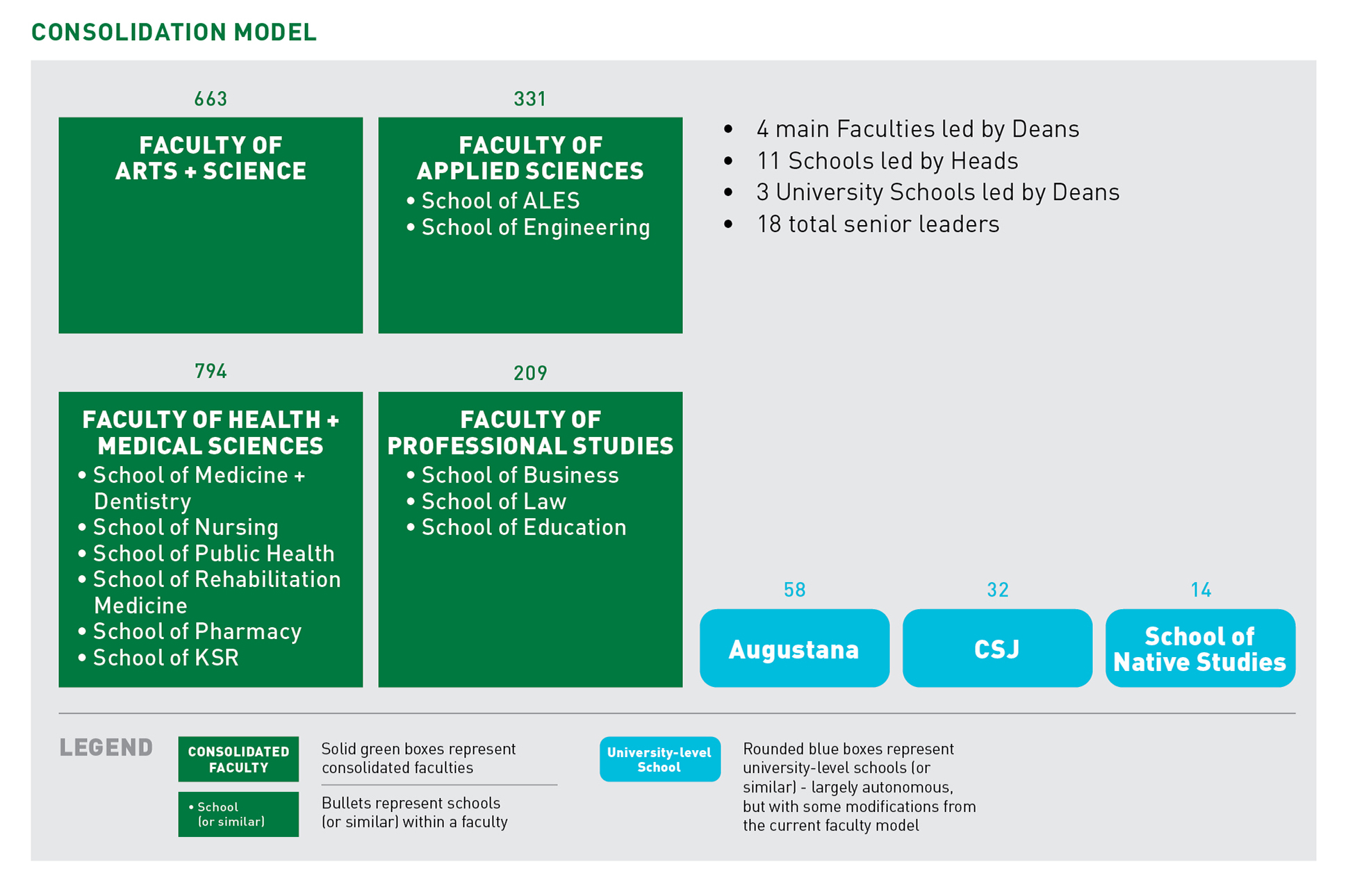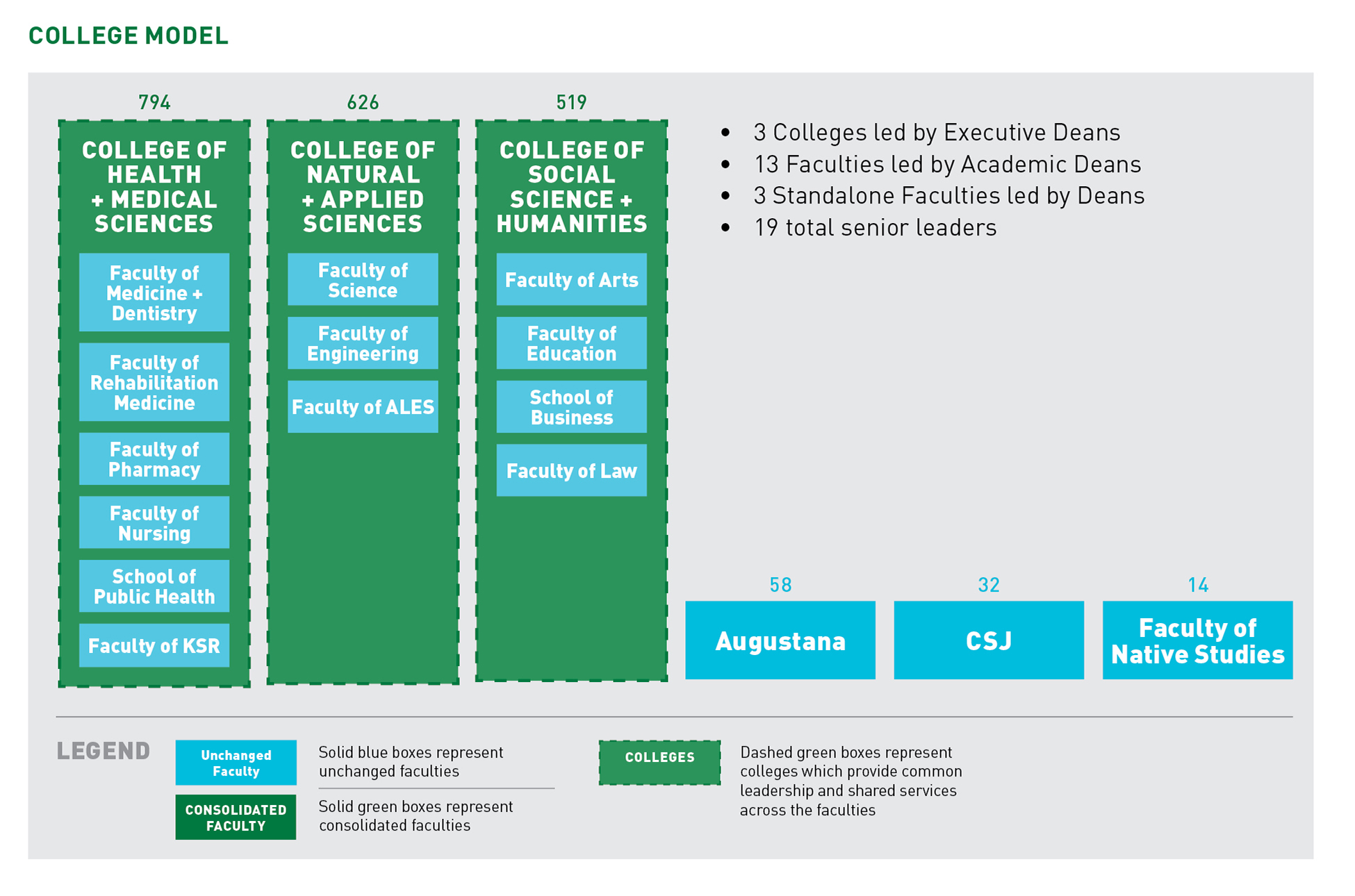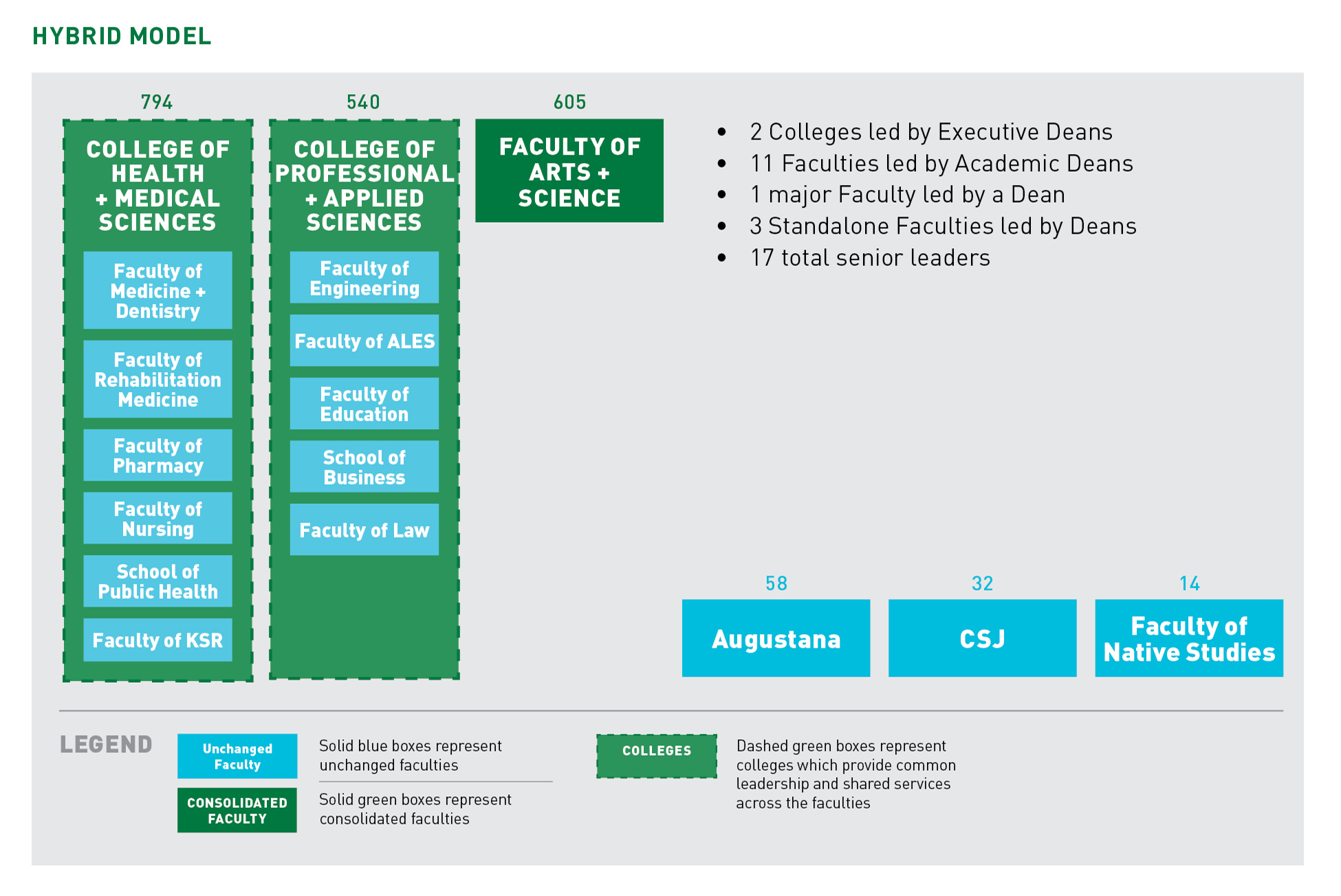Revised Proposals of the Academic Restructuring Working Group
On This Page
Consolidation Model Proposal | College Model Proposal | Hybrid Model Proposal | Organizational Comparison
After the release of the Interim Report of the Academic Restructuring Working Group on September 21, an intensive period of consultation was launched, in which dozens of governance and committee meetings, roundtables, and town halls. More than 9,000 people attended these discussions; we heard questions and received valuable feedback from a wide diversity of faculty, staff, students, and alumni and shared our learnings with the other members of the ARWG and with the broader community through regular posts and reports on the UAT website. Throughout this phase of consultation, the ARWG reviewed extensive consultation input, including the additional scenarios proposed by the community.
Throughout this phase of consultation, the ARWG has reviewed extensive consultation input, including the additional scenarios proposed by the community, and heard the key concerns and questions of the community. While differing opinions, perspectives, and analyses have been shared, there has been a constant: that is, a shared desire across the community to develop an academic organization supportive of academic excellence in the long term, particularly in the context of the current resource challenges.
Taking into consideration feedback received, the ARWG released Revised Proposals for Academic Restructuring for the consideration of the community on November 13, 2020. The first proposal focused on the consolidation of faculties, the second on a divisional or college model, and the third on a hybrid model.
All three scenarios preserved the autonomy of community-focused CSJ, Augustana and Native Studies.
A Second Phase of Consultation
As we moved through the final stages of governance review, discussion and approval, consultation occurred through the following avenues:
- Comments were submitted online. Summary reports will be prepared for distribution to governance bodies on November 20 and December 1.
- A UAT Town Hall was held on November 19. Watch the recording »
The governance pathway to decision was as follows:
- November 16: APC—review and discussion of revised proposals
- November 23: GFC—review and discussion of revised proposals
- November 25: APC—motion for recommendation to GFC of final proposal
- December 7: GFC—motion for recommendation to BOG of final proposal
- December 11: Board of Governors—motion for approval of final proposal
Consolidation Model Proposal

Consolidation Model. 4 main faculties led by Deans, containing 11 Schools led by Heads: Faculty of Arts + Science, Faculty of Applied Sciences (School of ALES and School of Engineering), Faculty of Health + Medical Sciences (School of Medicine + Dentistry, School of Nursing, School of Public Health, School of Rehabilitation Medicine, School of Pharmacy, School of KSR), and Faculty of Professional Studies (School of Business, School of Law, School of Education); 3 University Schools (Augustana, CSJ, and School of Native Studies) led by Deans. This model has 18 total senior leaders.
- 16 current faculties (excluding FGSR and Extension) would be consolidated into four main faculties and three University Schools (autonomous academic units standing outside the main faculties)
- Most existing faculties would become schools within a larger faculty - these schools would retain full academic autonomy over curriculum and programs, and administrative and budgetary autonomy subject to certain parameters around administrative services
- The faculty-level unit would provide most administrative functions, set overall strategic direction, recruit and supervise school leaders, set budgets for schools, and represent the constituent units on Deans’ Council Executive.
- Several faculties that would be consolidated are considered professional programs and have external accreditation requirements (e.g., Nursing, Pharmacy). To ensure the quality and integrity of these programs, these would need to retain a high level of academic ownership and autonomy, with academic leadership from within the profession.
See Revised Proposals report for full details.
College Model Proposal

College Model. 3 colleges lead by Executive Deans, containing 13 faculties led by Academic Deans: College of Health + Medical Sciences (Faculty of Medicine + Dentistry, Faculty of Rehabilitation Medicine, Faculty of Pharmacy, Faculty of Nursing, School of Public Health, and Faculty of KSR), College of Natural + Applied Sciences (Faculty of Science, Faculty of Engineering, and Faculty of ALES), and College of Social Science + Humanities (Faculty of Arts, Faculty of Education, School of Business, and Faculty of Law); 3 standalone faculties (Augustana, CSJ, and School of Native Studies) led by Deans. This model has 19 senior leaders.
- 13 current faculties are organized into three colleges along on Tri-Agency lines, with three stand-alone faculties outside of the collegiate structure.
- Within each college, existing faculties would remain intact and would continue to be called faculties but most administrative functions would be transferred to the college level.
- Faculties would retain full academic autonomy over curriculum and programs. They would also retain budgetary autonomy, subject to certain parameters around administrative services.
- The college provides high level strategic direction and administrative services, the faculty focuses on academic programming and research with minimal administration, and departments support the faculty in delivering the academic functions where disciplinary specialization makes sense.
See Revised Proposals report for full details.
Hybrid Model Proposal

Hybrid Model. 2 Colleges led by Executive Deans and containing 11 Faculties led by Academic Deans: College of Health + Medical Sciences (Faculty of Medicine + Dentistry, Faculty of Rehabilitation Medicine, Faculty of Pharmacy, Faculty of Nursing, School of Public Health, and Faculty of KSR) and College of Professional + Applied Sciences (Faculty of Engineering, Faculty of ALES, Faculty of Education, School of Business, Faculty of Law); 1 major Faculty, the Faculty of Arts + Science, led by a Dean; 3 standalone faculties (Augustana, CSJ, and School of Native Studies) led by Deans. This model has 17 senior leaders.
- 10 current faculties consolidated into two colleges, with Arts and Science consolidated into a single major faculty and CSJ, Native Studies and Augustana remaining as stand-alone faculties.
- Within each college, existing faculties would remain intact and would continue to be called faculties but most administrative functions would be transferred to the college level.
- Faculties would retain full academic autonomy over curriculum and programs, and administrative and budgetary autonomy within certain parameters around providing administrative services better delivered by the college.
- The general philosophy in this scenario is that within Arts and Science, opportunities for academic excellence and administrative efficiency are best achieved within a single integrated faculty, while in other disciplinary areas - particularly those with professional accreditation requirements - it is important for existing faculties to retain their current identities, autonomy, and distinction. The college model provides opportunities for those faculties to benefit from academic and administrative synergies.
See Revised Proposals report for full details.
Organizational Comparison
| Consolidation Model | College Model | Hybrid Model | |
|---|---|---|---|
| Leadership |
|
|
|
| Governance |
|
|
|
| Leadership Council |
|
|
|
| Faculty Evaluation |
|
|
|
| Budget Management |
|
|
For colleges:
For stand-alone:
|
| Faculty Administration |
|
|
For colleges:
For stand-alone:
|
| Academic Leader Roles |
|
|
|
| Projected admin cost savings | $26.5 million | $31.8 million | @$32.1 million |
| Projected leadership savings (indirect) | -$0.6 million to +$8.7 million | -$0.9 million to +$8.9 million | @-$0.3 million to +$8.5 million |